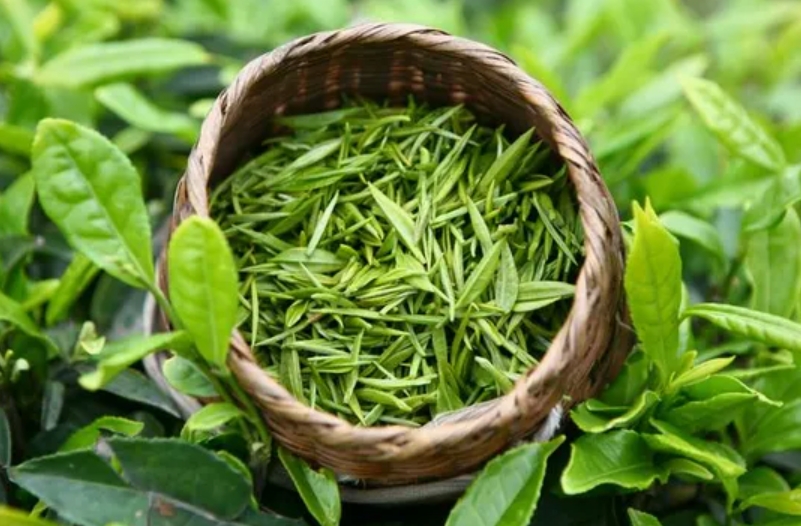Tea polyphenols (TPs) are a group of polyphenolic compounds found in tea leaves, including catechins, flavonoids, anthocyanins, and phenolic acids, with catechins making up approximately 60%-80%. Tea polyphenols possess various bioactive properties, such as antioxidant, antibacterial, antiviral, lipid-lowering, blood sugar regulation, and anticancer effects. Due to these properties, they are widely applied in the food, pharmaceutical, and cosmetic industries.
Preservative Mechanism of Tea Polyphenols
- Disrupting Microbial Cell Walls and Membranes
Tea polyphenols can damage the structural integrity of microbial cell walls and membranes. For bacteria, they may disrupt the peptidoglycan or lipopolysaccharide layers, while in fungi, they can affect the chitin and glucan components of the cell wall. Additionally, tea polyphenols interfere with the phospholipid bilayer, altering membrane fluidity and permeability. This leads to the leakage of essential intracellular substances, such as potassium ions (K⁺) and small molecules like amino acids, ultimately inhibiting microbial growth. - Inhibiting Enzyme Activity
Tea polyphenols inhibit key oxidative and hydrolytic enzymes essential for microbial metabolism, thereby hindering microbial growth and reproduction. - Antioxidant Properties
Lipids in food are prone to oxidation due to oxygen exposure, light, and temperature, leading to spoilage, discoloration, and off-flavors. Tea polyphenols act as hydrogen donors to neutralize free radicals, interrupting chain reactions and preventing lipid oxidation, which helps extend shelf life. - Coagulating Bacterial Proteins and Interfering with Genetic Material
Tea polyphenols can bind to bacterial proteins, rendering them inactive, while also interfering with bacterial DNA replication and expression, thereby inhibiting microbial proliferation. - Preventing Microbial Adhesion
Microorganisms easily attach to food processing equipment and packaging surfaces, forming biofilms. Tea polyphenols can alter surface charges and hydrophobicity, reducing microbial adhesion and lowering contamination risks.
Antioxidant Mechanism of Tea Polyphenols
- Scavenging Free Radicals
Metabolic processes generate free radicals such as superoxide anions (・O₂⁻) and hydroxyl radicals (・OH), which can cause cellular damage. The hydroxyl (-OH) groups in tea polyphenols donate hydrogen atoms to neutralize free radicals, stopping oxidative chain reactions and minimizing oxidative stress. - Chelating Metal Ions
Metal ions like Fe³⁺ and Cu²⁺ catalyze oxidation reactions, promoting free radical formation. Tea polyphenols bind to these metal ions, forming stable complexes that reduce their catalytic activity and slow down oxidation. - Inhibiting Oxidative Enzymes
Oxidative enzymes such as lipoxygenase (LOX) catalyze lipid oxidation, leading to food spoilage and cellular damage. Tea polyphenols inhibit these enzymes by interacting with their active sites, reducing the production of oxidative byproducts. - Enhancing Cellular Antioxidant Defense
Tea polyphenols stimulate the expression and activity of endogenous antioxidant enzymes such as superoxide dismutase (SOD), glutathione peroxidase (GSH-Px), and catalase (CAT), strengthening cellular defense mechanisms and maintaining redox balance.
Applications of Tea Polyphenols in Food Preservation
- Baked Goods: Adding tea polyphenols to bread and pastries helps prevent lipid oxidation, extending shelf life while preserving flavor and texture. For example, incorporating 0.05% tea polyphenols in whole wheat bread can extend its shelf life from 3-5 days to 7-9 days while reducing off-flavors.
- Oils and Fats: Adding 0.02% tea polyphenols to edible oils or frying oils significantly slows the increase in peroxide value (POV) and acid value (AV), extending the shelf life by approximately 3-6 months.
As a natural, safe preservative and antioxidant, tea polyphenols offer significant value in food, pharmaceutical, and cosmetic applications, making them an ideal choice for modern green and health-conscious products.

